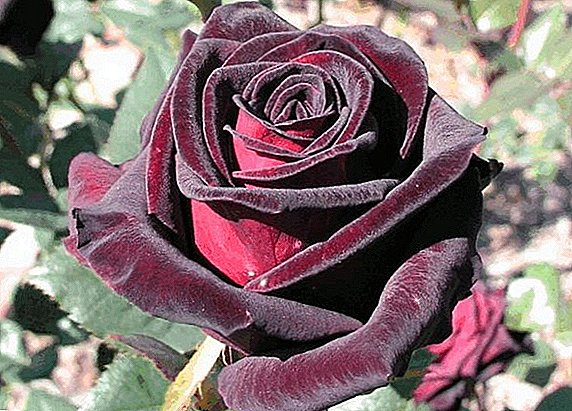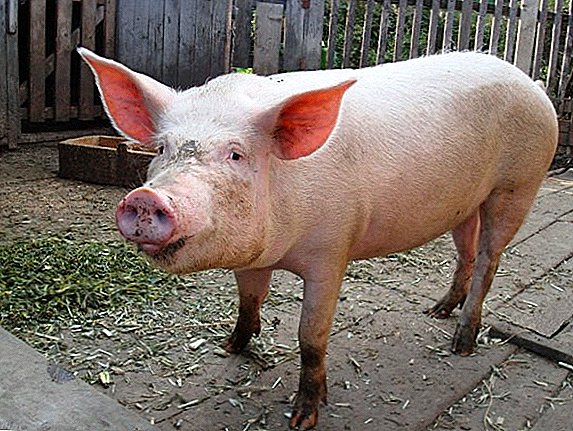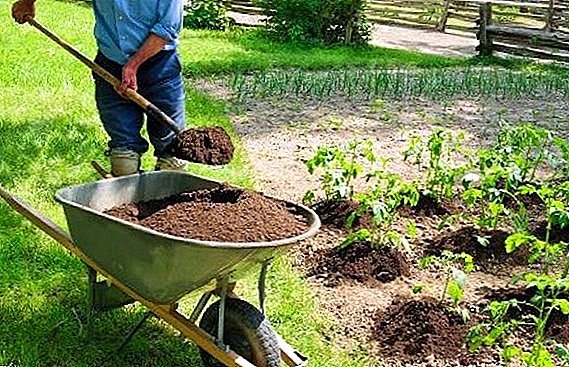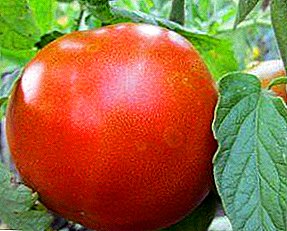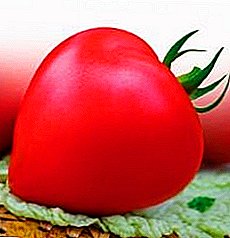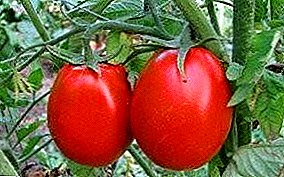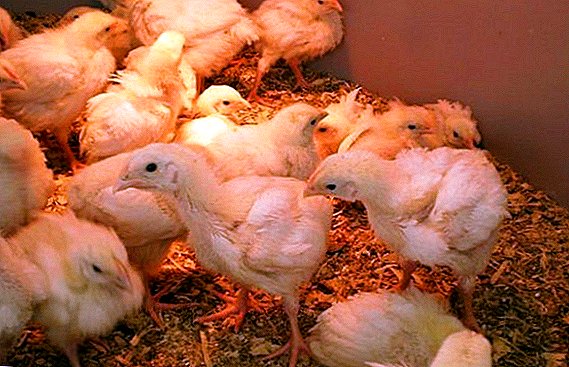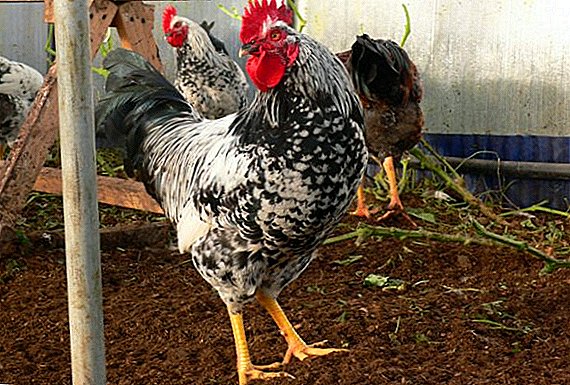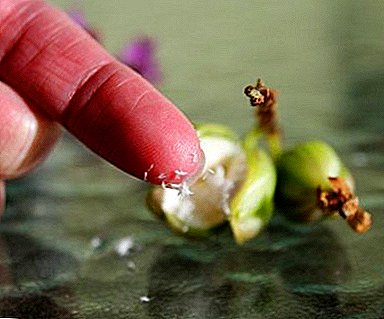
Phalaenopsis orchids are propagated by seeds much less frequently than in other ways. Typically, this method is resorted to when it is necessary to achieve the emergence of new plant varieties that differ in the color of flowers or leaves.
This requires certain knowledge and skills, and most importantly great patience. But taking up such a difficult task, in the end, the reward will not be long in coming, the shoots of a new exotic plant will appear, and in a few years the colorful flowering will be pleasing to the eye.
What is this breeding method?
Sexual reproduction of plants is performed by planting seeds. In this case, an exchange of genetic material occurs. The process of transfer of parental traits plays an important role in breeding, and makes it possible to develop new plant varieties of the same species with the necessary properties. Fruits with seeds appear from flowers. The essence of obtaining seeds with the embryo of a new plant is the fertilization of the ovum with the sperm of the pistil, resulting in a fruit, and then a seed appears from the ovules.
Advantages and disadvantages
 Seed propagation is a rather complicated process, with advantages and disadvantages. It should be understood that orchids do not have the supply of nutrients or endosperm. The peculiarity is that the nutrients are very small, and they are in the bud.
Seed propagation is a rather complicated process, with advantages and disadvantages. It should be understood that orchids do not have the supply of nutrients or endosperm. The peculiarity is that the nutrients are very small, and they are in the bud.
The smallest seeds often die during germination. In the event that the seed has sprouted, it is more like a tuber like formation or protocorm. In order for it to resemble an independent plant, that is, it could break complex organic compounds into simpler ones, it needs to be infected with a fungus. But the plant can still all die. Or because the orchid is too weak, and the fungus will destroy the seed. Either the plant’s immune system is very strong and it cannot get infected.
Pros:
- Preservation in the future plant of the chromosomes of the maternal and paternal individuals.
- The result is a resistant and weather resistant plant.
Minuses:
- The first bloom in 4-5 years.
- Ensuring maximum sterility during planting.
- Very small seeds. Moreover, they are susceptible to microbial diseases.
- A complex nutrient medium is required.
Where to get seed, and how much does it cost?
Flower seeds can be bought at a flower shop or ordered from an online store. A more complicated way is to get seeds yourself from seed bolls.formed on phalaenopsis orchid. The estimated cost in Moscow is about 400 rubles, in St. Petersburg - 300 rubles.
What does the photo look like?
Orchid seeds are rather small, more like dust particles. During the season they can ripen to a million. It is worth noting that they are extremely bad sprout.
See how the flower seeds look in the photo:





How to get out of the flower at home?
In order to get the seeds at home you need pollination. You will need a toothpick and two flowers. To carry out pollination can be cross (from one orchid to another) or in a direct way on one plant.
Important! All flowers except the top should peel off.
- Need to use the top flowers.
- A toothpick is very easy to remove the boot. To do this, it is necessary to slightly pry the boot bottom, due to its sticky layer (adhesive), it will stick to the toothpick and move away from the flower.
- Then you need to free the boot from the scales. To do this, you can use another toothpick or tweezers.
- The cleaned boot must be attached to the adhesive of the boot of another flower.
If everything is done correctly, then after 3-8 months the seed pods should mature. Approximately by three months, it is necessary to put a bag on the seed box, otherwise, when cracked, all the seeds will scatter. Fabric for the bag you need to choose breathable. Before using the bag should be boiled.
Ideal landing time
You can plant phalaenopsis at any time of the year, the main thing is to provide him with the necessary growing conditions. The most suitable time is spring. During this period, all the favorable conditions for a comfortable existence of the plant.
What capacity and soil to choose?
 Plant seeds must be sown on agar-based nutrient media, because they do not possess nutrients, the embryo is greatly reduced. For planting seeds:
Plant seeds must be sown on agar-based nutrient media, because they do not possess nutrients, the embryo is greatly reduced. For planting seeds:
- banks from under solutions for droppers, closed with a rubber cap;
- test tubes;
- glass flasks;
- cans with sealed lids.
When using cans with screw caps, be sure to make holes in the caps. They need to insert a small segment of the glass tube. Put cotton wool in it. This should be done so that air can get into the jar, and cotton wool serves as a barrier against dust and bacteria.
Step by step instructions: how to grow a plant?
Consider how to plant a flower with seeds at home.
Training
To sow orchid seeds, it is necessary to create a nutrient medium. It can be purchased at the store, or cook yourself. For one 200-gram cans you will need:
- Distilled water - 100-15 0ml.
- Fertilizer for orchids - 2-3 gr.
- Sugar - 1 gr.
- Honey - 1g.
- Agar-Agar - 3-4 gr. You can replace the potato or corn starch (20 grams.).
- Activated carbon - ¼ tablet.
- Puree green bananas - 5-7 gr.
- Activated carbon, banana must grind in a blender.
- Add sugar to distilled water, bring to a boil and mix all ingredients with the resulting solution.
- After waiting for thickening, remove the mixture from the stove.
Sterilization and spill of nutrient medium
Nutrient medium is poured into jars. It is stored in the refrigerator for several weeks. Be sure to jar for planting must be sterilized. To do this, put it on the bottom of the pan with water and boil for about 30 minutes after boiling. Sterilization is required 2 times.
Disinfection of planting material
Before sowing the seeds, it is necessary to disinfect. For example, soak them in an antiseptic solution. Recommend sowing seed box before dipping in ethyl alcohol and set it on fire.
Important! The box should not be dry.
Cut it with a sterile knife and pour it into sterile agar jars.
Sowing
 For sterile sowing it is best to use a burner. To do this, your hands must be treated with antiseptic or use sterile gloves. After cleaning and sterilizing the surface of the plate, a bank is placed on it. The burner should be lit.
For sterile sowing it is best to use a burner. To do this, your hands must be treated with antiseptic or use sterile gloves. After cleaning and sterilizing the surface of the plate, a bank is placed on it. The burner should be lit.
- Get the seeds out of the seed box. Perform this with a sterile instrument.
- The neck of the jar is recommended to hold over the fire.
- Pour the seeds in a jar.
- Again hold the neck of the jar over the fire, close the lid.
There is a second method of sowing seeds.
- To do this, it is necessary to make holes in the covers and close them up with scotch tape.
- When using this method, the seeds should be placed in a 3 percent solution of hydrogen peroxide.
- Pour the mixture into the syringe and pour it into the jar through the hole.
- After sowing, it is imperative to monitor seed germination.
- If mold is found on the jar, the nutrient medium with seeds from it must be removed.
The first shoots will appear in 1-2 months.
First watering
Before planting young plants in standard soil for orchids, they do not need to be watered. It is necessary to spray the spray with soft water at room temperature. The substrate should always be slightly wet.
Further care
- Lighting. Distributed light preferred. A light day lasting at least 12 hours.
- Temperature. The temperature required for growing is 20-23 degrees. After about one year, young plants will need to be transplanted into a steamed soil, which consists of chopped coniferous bark, sphagnum moss, fern rhizomes in a ratio of 1: 1: 1.
Growing an orchid from seed causes many difficulties. Having coped with them, you can watch for many years the beautiful flowering of the new beautiful plant.


